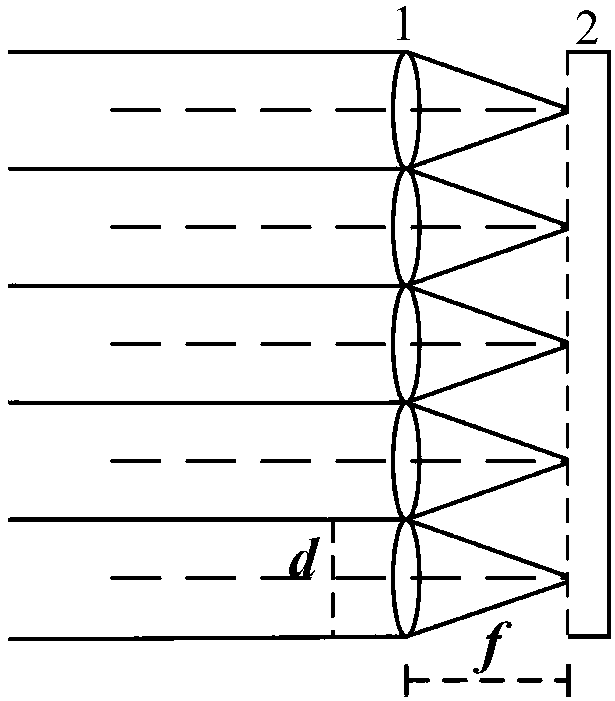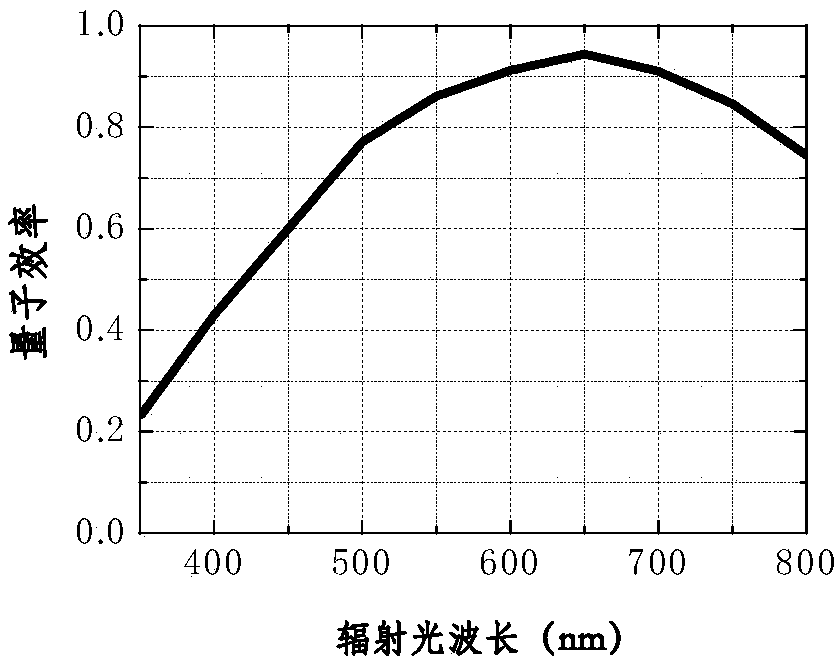Light spot centroid calculation method for weak signal of Hartmann wavefront detector
A calculation method and detector technology, applied in the field of adaptive optics, can solve problems such as large error in centroid calculation
- Summary
- Abstract
- Description
- Claims
- Application Information
AI Technical Summary
Problems solved by technology
Method used
Image
Examples
Embodiment Construction
[0042] The specific simulation process is as follows:
[0043] 1. The structural parameters of the Hartmann wavefront detector are: the aperture is 5.8mm, the number of microlenses is 20×20, arranged in a square, the diameter d of the microlenses is 288μm, the focal length is f=20.1mm, and the light wavelength λ=550nm; the back camera The readout noise of the CCD is negligible, the number of pixels of the CCD is 120×120, the number of pixels of the sub-area is 6×6, and the pixel size of the CCD is 24μm×24μm; the diameter of the Airy spot after the sub-wavefront passes through the microlens is 1.2λf / d=1.9 pixels, so that the light spot can cover about 3×3 pixels under the influence of the distorted wavefront.
[0044] 2. The detected target magnitude is 5.5, which exceeds the detection limit magnitude of the former Hartmann wavefront detector of the present invention, and the number of photoelectrons corresponding to the sub-region light spots is 100.
[0045] 3. Obtain the p...
PUM
 Login to View More
Login to View More Abstract
Description
Claims
Application Information
 Login to View More
Login to View More - R&D
- Intellectual Property
- Life Sciences
- Materials
- Tech Scout
- Unparalleled Data Quality
- Higher Quality Content
- 60% Fewer Hallucinations
Browse by: Latest US Patents, China's latest patents, Technical Efficacy Thesaurus, Application Domain, Technology Topic, Popular Technical Reports.
© 2025 PatSnap. All rights reserved.Legal|Privacy policy|Modern Slavery Act Transparency Statement|Sitemap|About US| Contact US: help@patsnap.com



